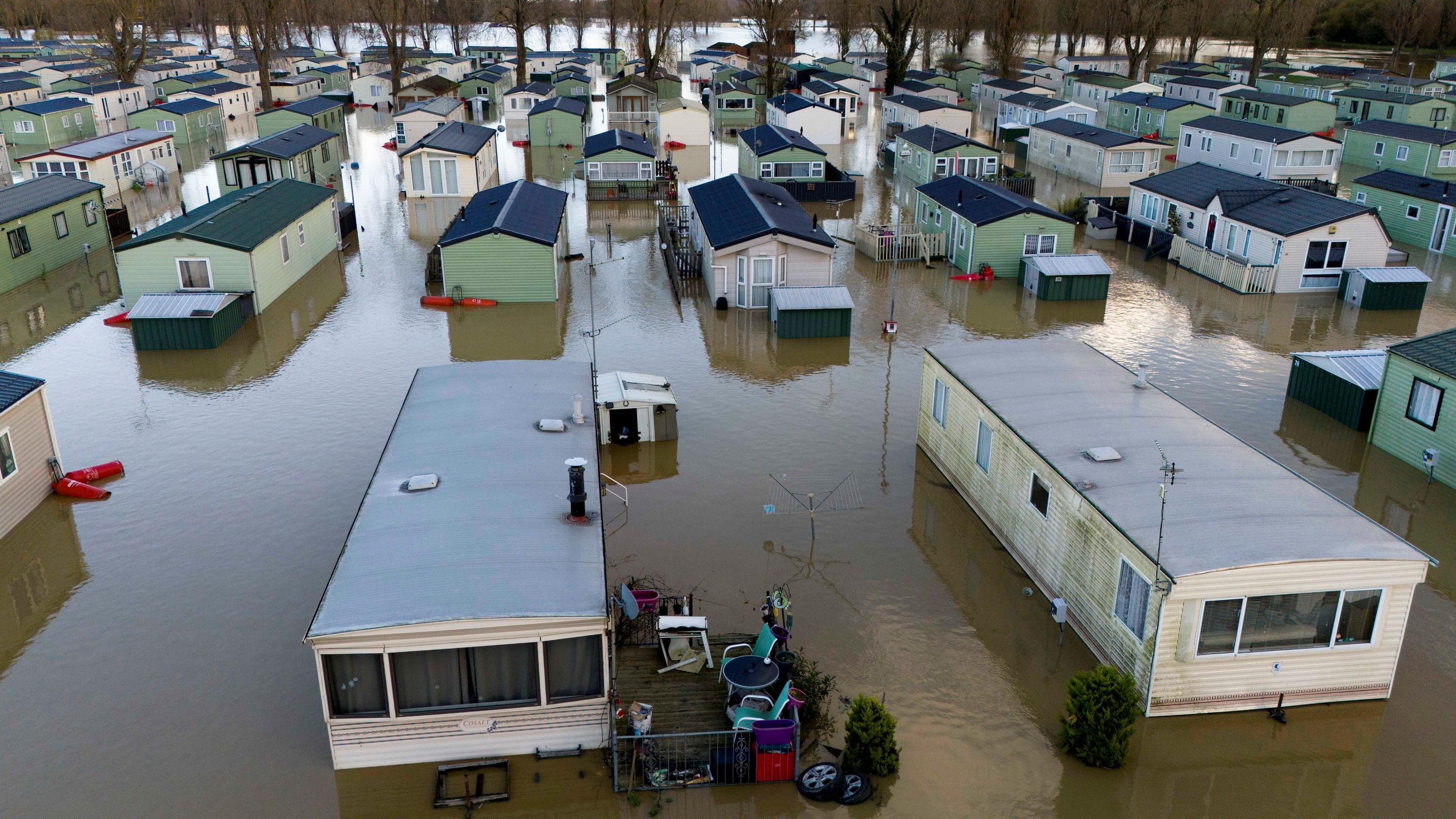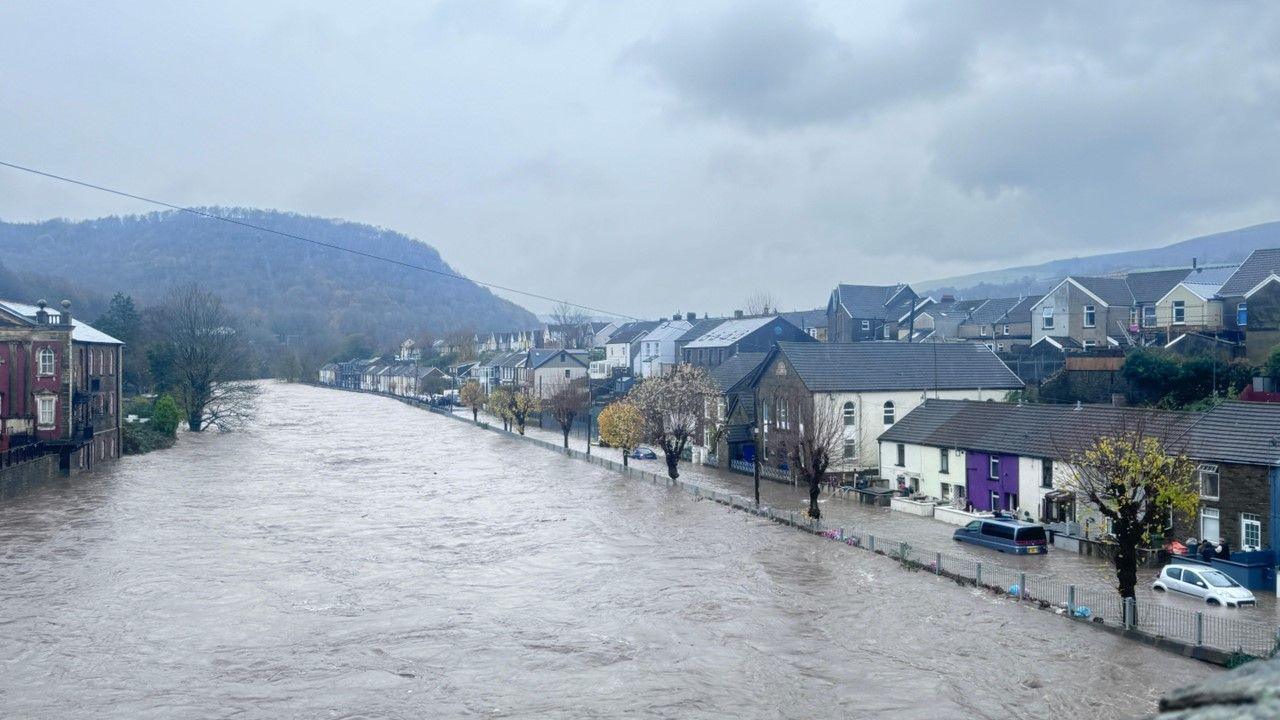UK floods: Are there different types and how can you prepare?
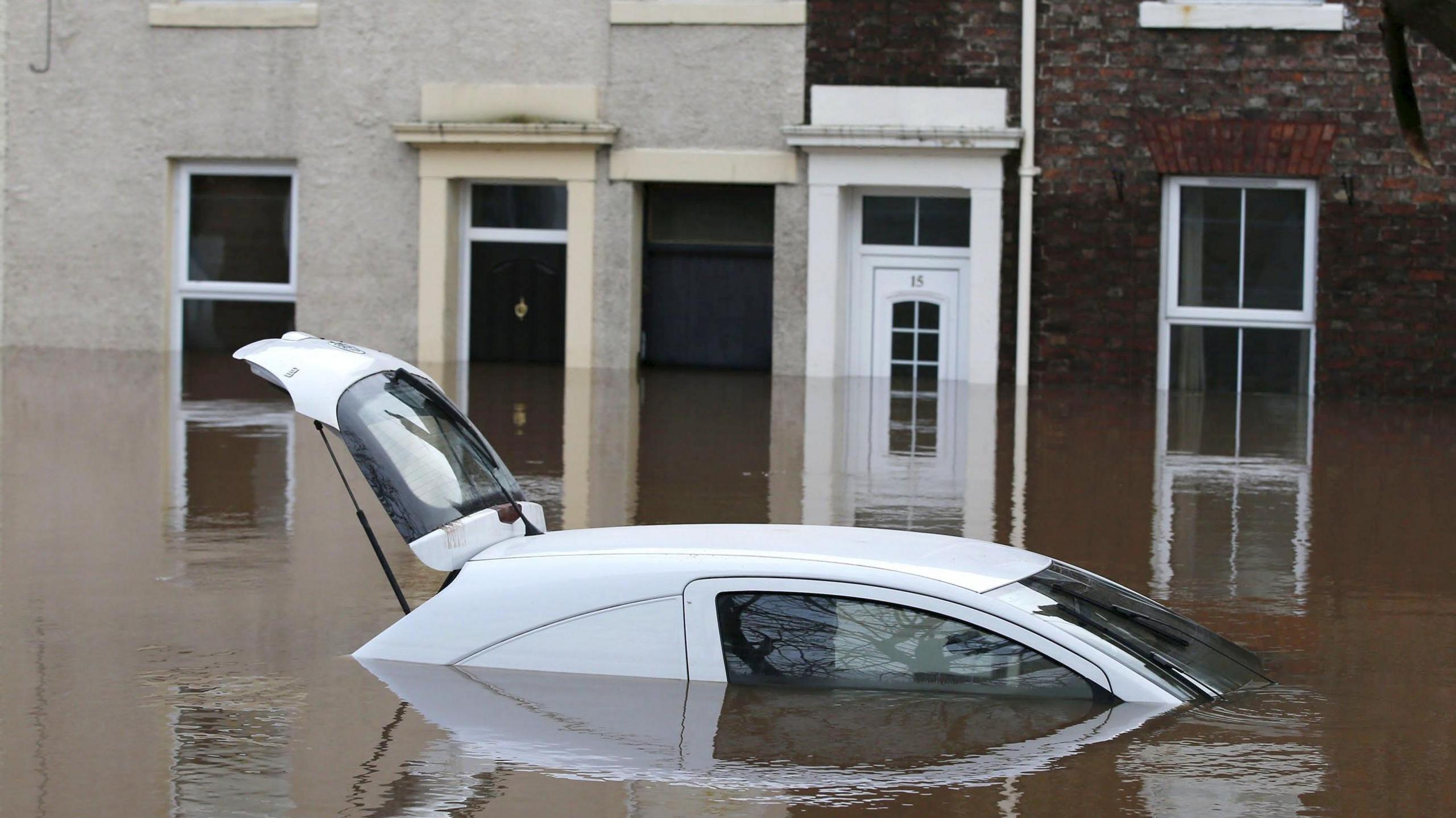
- Published
Flooding is one of the most important challenges faced by all four nations of the UK.
Not only is there a massive financial cost – according to the UK government, floods in 2015/16 cost the economy £1.6bn, external – there can be a devastating human toll too.
In addition to the physical harm that can be caused to people, property and the environment, there can also be a deep and long term impact on the mental health of those affected by it. One study found that a year after flooding there was still a prevalence of PTSD , externalamong 36% of those who were questioned, while 28% reported continuing anxiety.
Are floods getting worse?
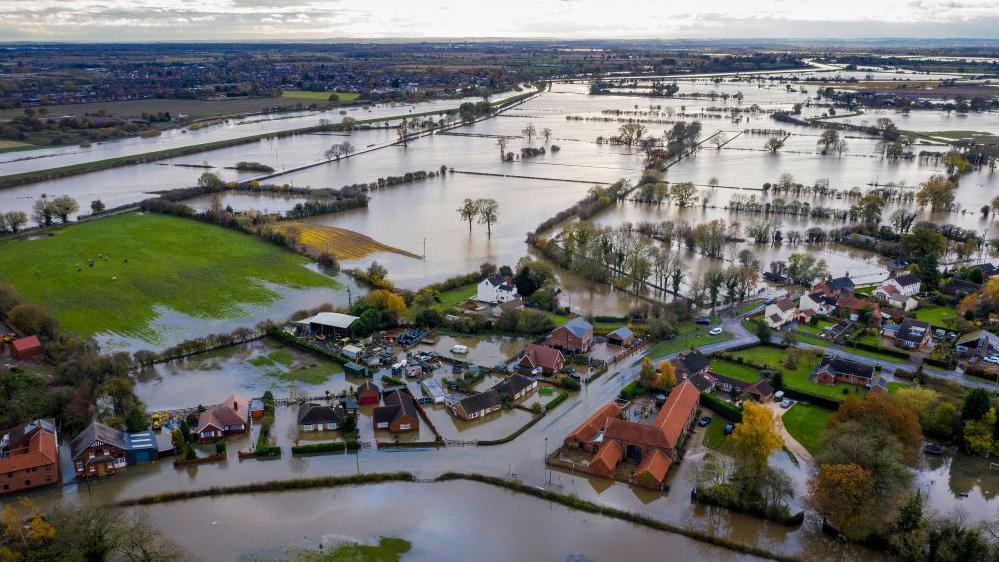
Around 90% of homes in Fishlake, South Yorkshire, were flooded in November 2019
A warming climate is likely to bring wetter weather to the UK.
According to the Met Office the intense storms seen in the 2023-24 season would have been one-in-50-year events in a pre-industrial climate. Today, similar intense storm rainfall is expected to occur more often, about once in every five years.
The amount of rain from these storms has also increased due to climate change as higher temperatures mean the atmosphere contains more moisture. They are now about 20% more intense, external compared to the pre-industrial climate.
However, there are lots of other aspects that may play a role in why flooding occurs in any location such as developments located on flood plains and wider land use.
There are three main types of floods: flash and surface water, river, and coastal.
Flash and surface water flooding

Flash flooding brought travel chaos to London's streets and tube network in July 2021
As the names suggest, this is flooding that can occur very rapidly.
It happens when large amounts of rain falls in a short space of time and the underlying ground is unable to cope or drain the water away quick enough. This can be a particular problem in urban areas.
In July 2021 more than a thousand properties in London, as well as more than 30 tube stations were affected by flooding when double the normal July rainfall fell in just two hours.
Flash flooding was also responsible for devastating floods that hit Boscastle, Cornwall, in August 2004. Torrential rain falling onto steep valley sides sent an ever-worsening surge of water down rivers and into the village.
River flooding

In January 2024 flood waters gradually flowed down the River Severn to surround the town of Tewkesbury after Storm Henk
Unlike flash and surface water flooding, flooding from rivers can impact larger areas and last longer. It happens when river courses are no longer capable of transporting the volume of water that is flowing into them from the surrounding land and tributaries.
The speed and scale of river flooding depends on a location's position relative to where it sits on a river's course. Places nearer to the start of the river tend to flood, and then see the waters recede fairly quickly. This is because the rivers are generally narrower and carry less water, or they are near steeper-sided valleys aiding quicker runoff of rainfall.
Wider rivers downstream will often take longer to peak and flood - sometimes days after heavy rain has fallen upstream. The flooding here can last for longer and affect much larger areas. This is the sort of flooding we often see on rivers such as the Severn, Thames, Trent and Tay – large rivers that slowly accumulate huge volumes of water from numerous smaller rivers feeding them.
Coastal flooding
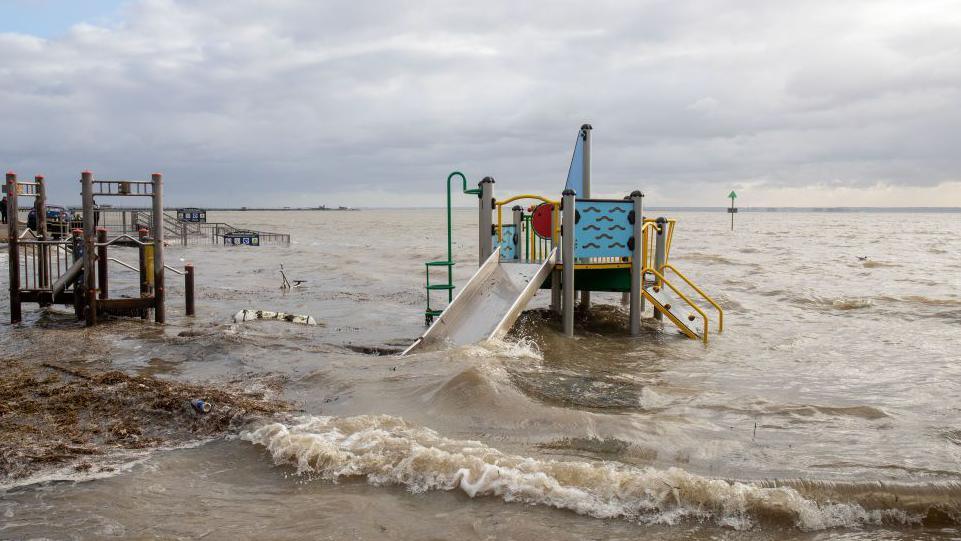
Rising sea levels due to climate change will put more coastal areas at risk of flooding
This is probably the most dangerous type of flooding in terms of impact.
Watch out for forecasts of stormy weather near coasts as strong on-shore winds can whip up high waves that crash into coastal areas. Deep and stormy areas of low pressure, especially tropical storms, can also cause a storm surge.
Already across England and Wales, there are more than 600,000 residential properties at risk of coasts flooding. Sea level rises linked to climate change mean that it could become an even greater threat in some areas.
What do flood warnings mean?
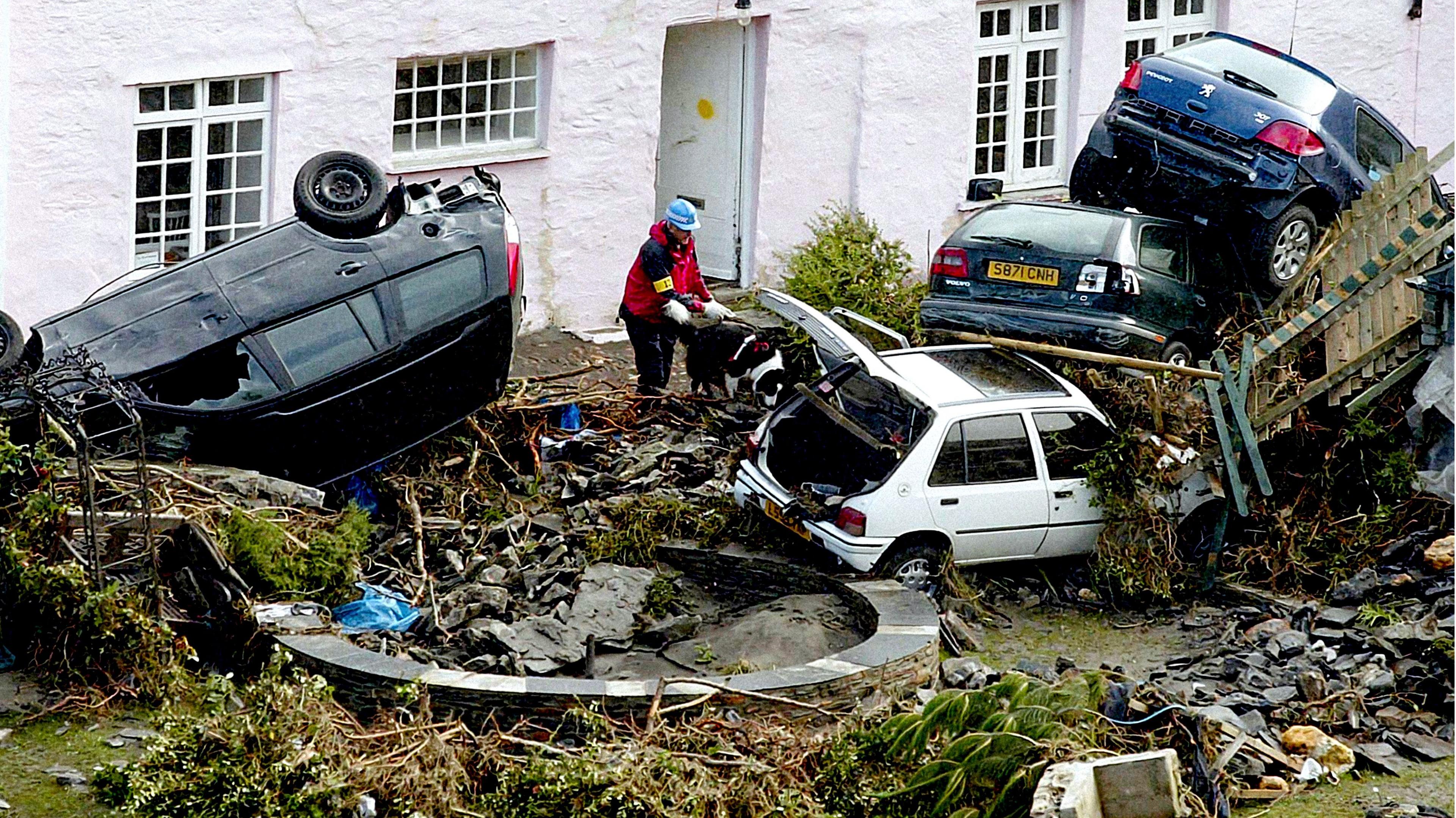
A search of cars and property begins after flash floods hit Boscastle, Cornwall, in August 2004
When there's a risk of flooding forecast, it is important to keep across any relevant warnings that are issued, and respond accordingly.
These are the responsibility of the Environment Agency, external (in England), Natural Resources Wales, external and the Scottish Environmental Protection Agency, external. In Northern Ireland, external multiple agencies look after flooding.
There are three different levels of warnings:
Flood alert: Means that flooding is possible so you should prepare now.
Flood warning: Means that flooding is expected so you should act now.
Severe flood warning: Means that flooding could cause danger to life and significant disruption to communities. You must act now.
What can I do to prepare?
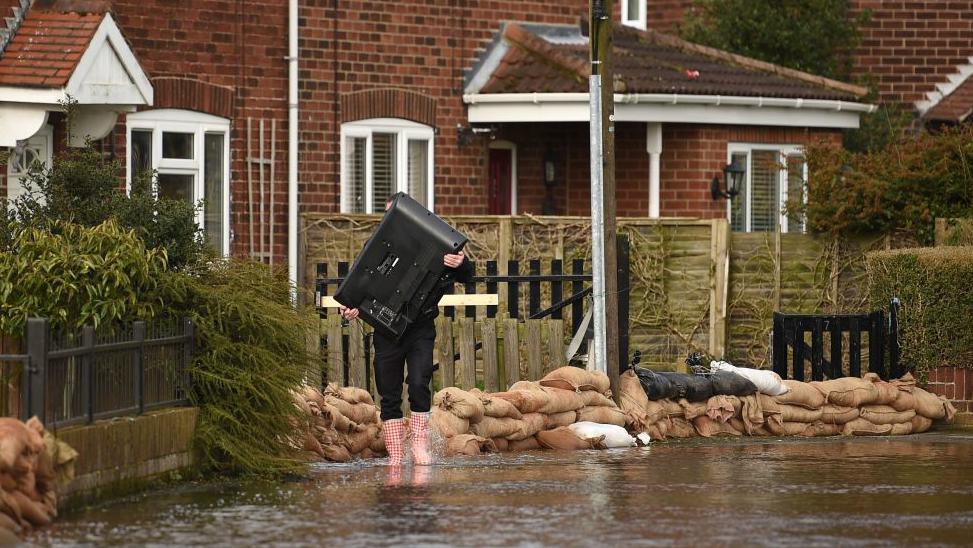
Planning ahead of floods may limit some of the impacts
If flooding is forecast for your area, the UK government suggests four steps you can take, external.
Turn off your energy and water supplies if it is safe to do so. Make sure you never turn off an electrical switch if you're standing in water.
Move yourself, your family, pets and any important items to safety.
Use flood protection products like air brick covers or flood barriers if you have them.
Follow advice from your local council and emergency services.
If you live in a flood risk area, it's also suggested that you make a personal flood plan, external.
- Published5 December 2024
